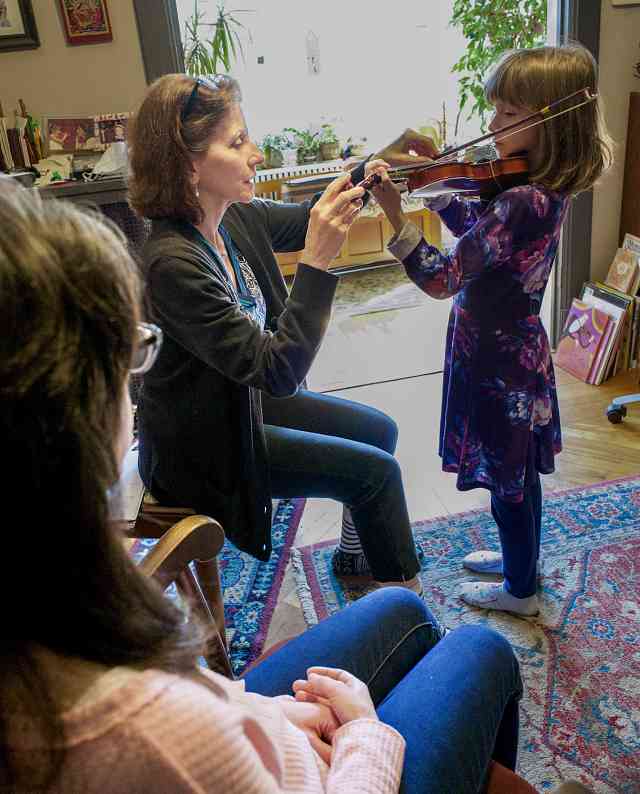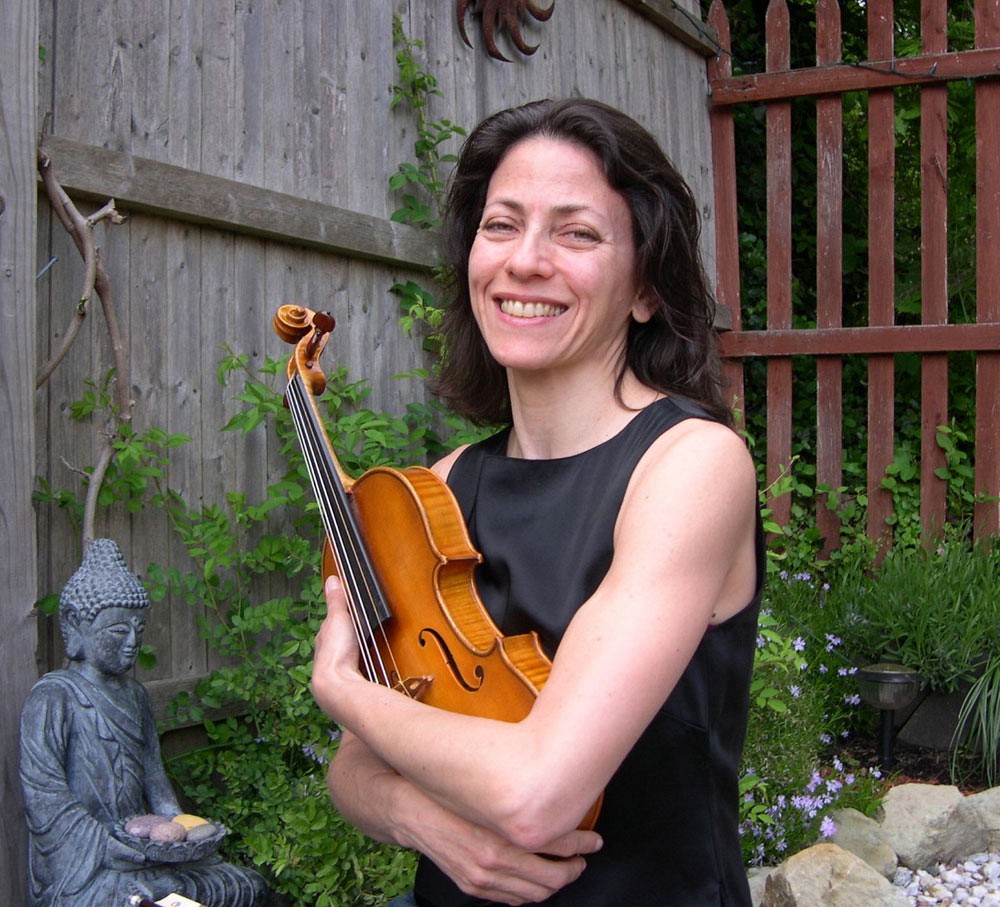by Sanchie Bobrow
Years ago, a very prominent show business couple were interested in starting their four-year-old child at the School for Strings in New York City. They sat with the school’s founder, Louise Behrend, for their interview and asked whether their au pere could take the role of Suzuki “parent” for their child, instead of either of them. Of course, it would have been exciting to have such a famous family at the school at the time, but Ms. Behrend had very strong principles and told them “no.” If one of them could not commit to fully participating in the program and to practicing with their child, then this was not going to work. She turned them down.
I often think of Ms. Behrend’s unwavering commitment to the precepts that form the basis for the Suzuki Method. A most important point is that the child and one or both parents must take the Suzuki journey together. One of the primary premises of Dr. Suzuki’s Mother Tongue Method is that when the mother begins her violin studies, the child will be motivated, inspired and want to imitate what Mommy is doing. The child will eventually take the instrument from the mother and ask to play as well. Just as the child learns to speak by listening to and imitating the parent, he will want to learn music by emulating his parent.

The author teaching student Elizabeth Evans.
The roles of parents in the family structure have changed dramatically since the 1950s when Dr. Suzuki created his method, as the average mother today not only works, but is an equal partner in supporting the family. This surely poses some challenges for an educational method based on the premise that the mother will be home to raise her children while the father goes to work every day. But, many families find ways to achieve the Suzuki triangle, even with the challenges posed by our current lifestyles. Often, both parents attend lessons, videotaping lessons and reviewing them at home so that either parent can share practice responsibilities with the child. Many Suzuki parents modify their work schedules to accommodate the scheduling of lessons and practice. If there is a rare occasion when a caregiver must bring the child to the lesson, then the lesson must be videotaped and any special instructions to the parent must be written down. Parents should communicate with their child’s instrumental teacher if issues arise about time constraints on practicing with their child. Usually a solution can be found. If there is a commitment and desire to learn with the Suzuki method and philosophy, then parents will find a way to make their lifestyles work on the behalf of their children’s musical education. As Suzuki said, “education means to teach and to nurture —without nurturing, education is ineffective.”
One lifestyle change that many parents these day seem not to be able to adjust to is the shutting down of digital devices during lessons. Many parents who are committed to attending lessons, but have their heads down and eyes on their cellphones or laptops, are missing the point of being absolutely present during their child’s lesson. With half of their brains and attention focused on computers and cellphones, how can parents follow the teaching points made during lessons that need to be nurtured at home practice? I can imagine what Ms. Behrend would have said if she’d ever experienced this at any of her students’ lessons: “Folks, put the darn things away!” As Constance Starr reminds in To Learn with Love, “every privilege carries with it a responsibility. The privilege of having loving, happy, well adjusted children makes time demands upon both mother and father. There are necessary sacrifices to make, as with all worthwhile goals and activities.”
Doesn’t every parent want to witness their child’s first steps, or hear them speak their first words? If you are enrolling your child in a Suzuki instrumental program, then you will want to witness their first lesson, their first rhythm on the instrument, their first fingered melody, their first time using both hands together on the keyboard, their first full phrase, first full piece of music, building repertoire, encouraging, preparing, listening, performing, progressing, growing together. All the esteem building and successes that come with working together as a team are part of what builds a stronger relationship with your child.
Parents who are committed to the Suzuki method have a unique opportunity to form a strong bond with their child throughout the entire learning process. This is a precious journey that will challenge and strengthen the parent/child relationship. If a parent’s life allows the space for it, why would anyone want to give that privilege to someone else? Communication skills will be tested and improved. There will be many celebrations of great achievements along the way. By learning and practicing together, the child will grow to appreciate their parent for their dedication and hard work on their behalf. The child will know how much they are loved and that knowledge will last for a lifetime.
Let us not forget that Dr. Suzuki’s main goal in teaching children to play from a very young age was to create good citizens: “The only concern for parents should be to bring up their children as noble human beings.” “If a child hears good music from the day of his birth, and learns to play it himself, he develops sensitivity, discipline and endurance. He gets a beautiful heart.”
The triangle between the child, the parent, and the teacher creates a dedicated and committed long-term relationship on the behalf the child, not just to develop fine young musicians, but to build strong character and develop good souls. This is a role that we, Suzuki teachers, take seriously and hope that parents will join with us, to do the same.
“Being a parent is perhaps the most important job in the world . . . building and nurturing the human person is certainly more important than building a bridge or a skyscraper or even writing a great piece of literature. We are helping to form the future creator of those buildings, the painter of those masterpieces, and the composer of those compositions. In that way we are helping to mold the future.”
–Constance Starr, To Learn With Love, p. 165.

Sanchie Bobrow received her Suzuki teacher training from Louise Behrend and has been a member of the violin faculty of the School for Strings in New york City since 1988. She is the director of the Mighty String Demons, an ensemble of young violinists, who perform at schools, senior homes, hospitals, museums, and charity events in their Staten Island community. Ms. Bobrow has written several articles on violin pedagogy for the Suzuki Association of the Americas Journal as well as the School for Strings’ newsletter, The Tuning Fork. A composer as well as a violin instructor, Ms. Bobrow had her composition for string orchestra, Points of Light, premiered by the Camerata of the School for Strings at the school’s 40th Anniversary Celebration Concert at Carnegie Hall in May of 2011. Her composition, The Elephant’s Secret, for narrator and string ensemble, is available for purchase at Sharmusic.com.
